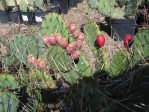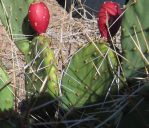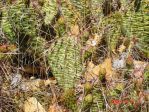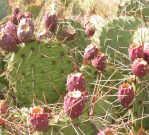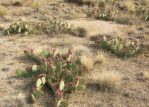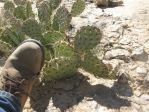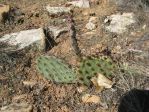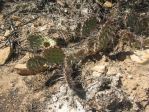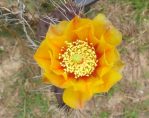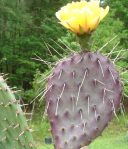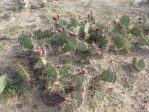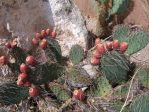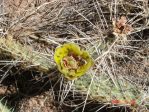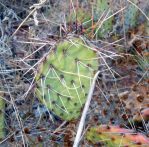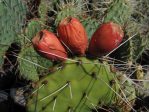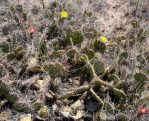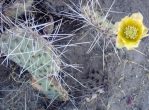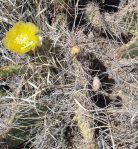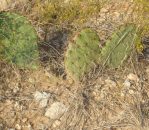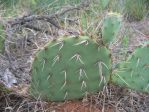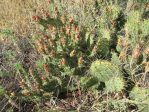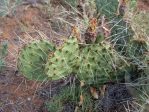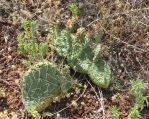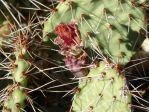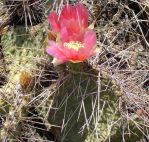
Engelmann & J.M. Bigelow, Reports of explorations and surveys, to ascertain the most practicable and economical route for a railroad from the Mississippi River to the Pacific Ocean 4(5; 3): 41 (1857 publ. 1856)
Isolectoype; Herbarium; Herbarium; Herbarium; Herbarium; Herbarium; Herbarium; Herbarium (submitted as O. aff polyacantha); Herbarium; Herbarium; Herbarium; Herbarium; Herbarium; Herbarium (submitted as O. polyacantha); Herbarium (submitted as O. polyacantha); Herbarium (submitted as O. polyacantha); Drawing (Britton and Rose, v1 1919, plate XV)
Original Description
What is Opuntia tortispina?
Opuntia tortispina is a prickly pear cactus that has been confused with O. cymochila, O. mackensenii, O. phaeacantha and other, small Opuntias. O. tortispina may grow alongside the other prickly pears, but it is distinct.
Details
From Powell and Weedin:
O. tortispina is often spinier appearing than other nearby species of Opuntia and is a low, creeping, spreading, and sprawling plant . It seldom exceeds 30 cm tall. The pads are obovate or long obovate about 10-20 cm long and 7-12 cm wide. Areoles over 2/3 of the pads have spines, often 3 to 5 centrals (typically white or tan). Areoles are closer together on O. tortispina than on O. phaeacantha, which can give a spinier look. Pads may/may not have transverse wrinkles in winter; however, unlike O. cymochila the wrinkles smooth out when turgidity returns.
Flowers may be all yellow or may have reddish centers in this prickly pear. The fruits are juicy and obovate to elliptic.
O. tortispina is hexaploid or tetraploid. The two reported ploidy levels may mean that two different taxa exist.
Other Notes
See a table comparing O. tortispina with O. cymochila.
This Opuntia is found in sandy soils in mid-altitude woodlands and grasslands and irregularly in other locations. O. tortispina is found from northern Mexico to Colorado, Arizona, and Texas and perhaps north to Colorado and Kansas. Some botanists consider that O. tortispina is a species of hybrid origin. However, such hybridization would have occurred long ago. Whatever its origins, it is a stable, self-reproducing, and stand-alone species now.
For more information see:
Majure, L.C., Puente, R., Griffith M.P, Judd W.S., Soltis P.S and Soltis, D.E. (2012b) Phylogeny of Opuntia s.s. (Cactaceae): Clade delineation, geographic origins, and reticulate evolution. American Journal of Botany, 99:847.

